Typically, when a child is around 13 months old, their first molar tooth will begin to emerge – marking an important milestone in their development. The stage when a child is about to get their molars comes with many characteristic signs, and early recognition by parents will help them prepare well and provide comprehensive oral health care. So, what does a baby’s gum look like when molars are about to erupt? Parents, please read the following article for answers!
Signs of molar eruption in children
The first primary teeth usually appear when a child is around 6 months old, but the timing of tooth eruption can vary depending on each child’s constitution. By about 3 years old, most children have all 20 primary teeth, laying a solid foundation for the development of permanent teeth later on. The teething stage not only affects eating but is also closely related to a child’s overall development.
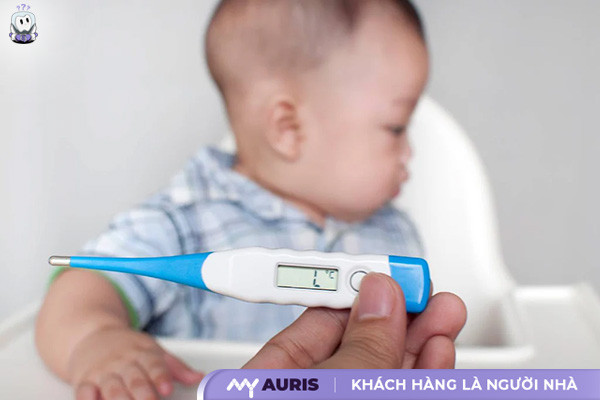
Mild fever of about 38 – 38.5 degrees C
When children are teething molars, a mild fever often occurs due to painful and swollen gums, causing the body to react by raising its temperature (internal heat). Teething fever usually lasts 2 – 3 days, after which the tooth will emerge within 5 – 7 days.
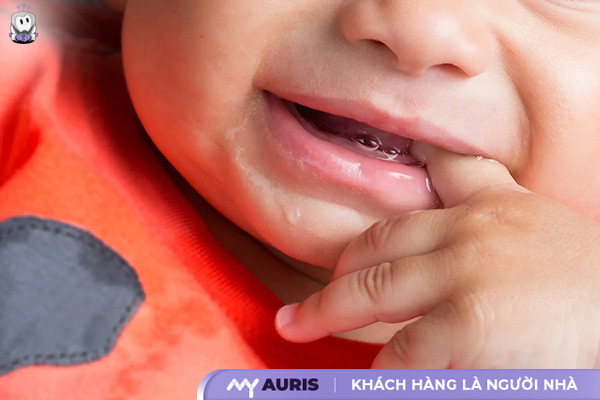
Excessive drooling
One of the common signs when a baby’s gums are about to sprout molars is excessive drooling. This is a common physiological sign, usually appearing from the 4th month onwards, so parents do not need to worry too much.
The cause stems from the stimulation of the trigeminal nerve during tooth development. At the same time, a child’s oral cavity is still shallow and the swallowing reflex is not yet fully developed, leading to continuous drooling.
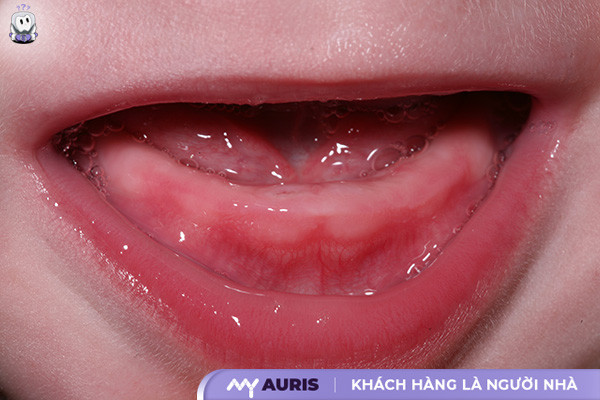
Swollen red gums
When a tooth bud emerges, a baby’s gums become swollen, red, and painful; this is a typical sign of teething in children. This condition makes children uncomfortable, often causing them to cry or put their hands in their mouths to relieve the discomfort. Gum swelling not only affects mood but is also an important sign that parents need to recognize to provide appropriate care.
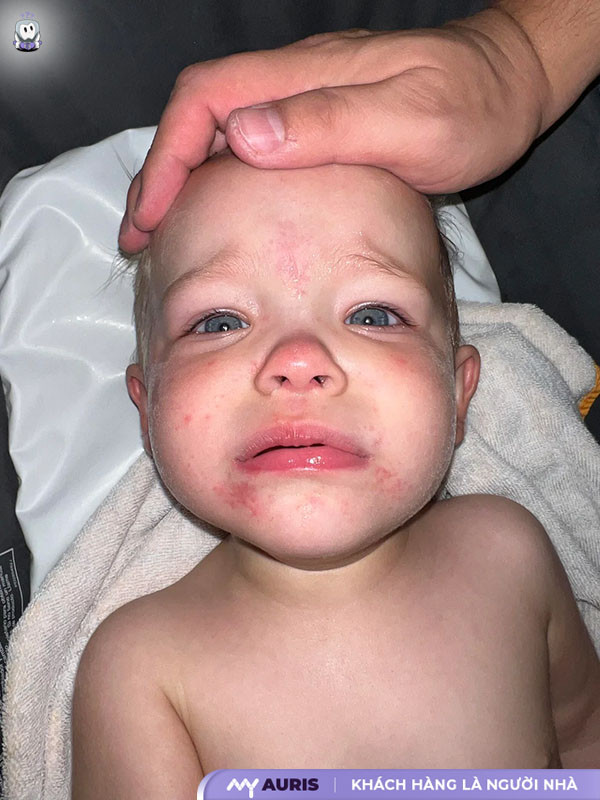
Red rash on the chin and around the mouth
Excessive drooling is a common reaction during this period, causing rashes on the chin and around the mouth. Parents should regularly clean the skin around the mouth to prevent irritation and help the baby feel more comfortable.
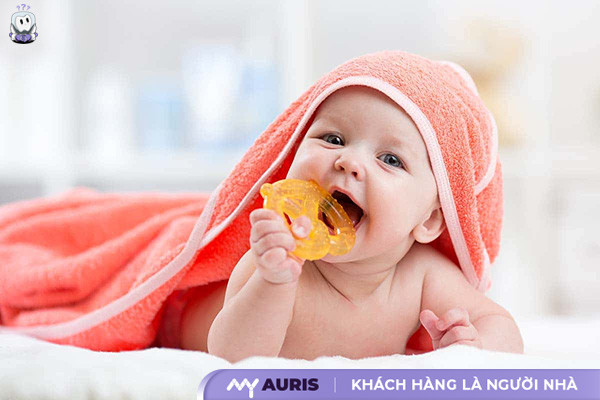
Child likes to bite and chew on everything
When teeth emerge, itchy gums make babies tend to gnaw and bite everything around them, even their own hands and feet. This is a characteristic sign, not only when molars are erupting but also for other types of teeth.
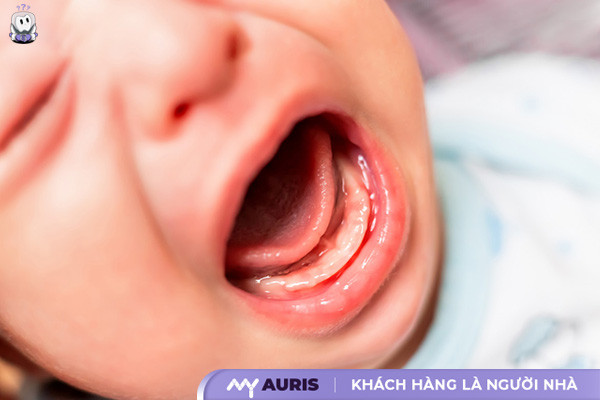
Fussiness, poor feeding, irritability
The process of teeth breaking through the gums causes the baby to have swollen and painful gums, accompanied by a mild fever, making the child uncomfortable, fussy, and irritable. Many babies do not want to eat or drink, feed poorly, or even refuse to breastfeed because their gums hurt when touched.
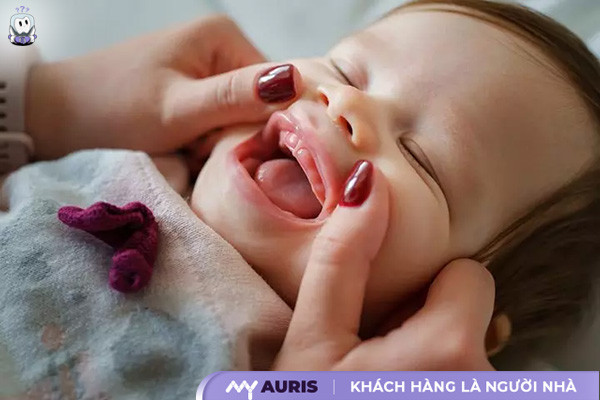
Other warning signs of teething
In addition to the above symptoms, children about to teethe may also experience: difficulty sleeping, insomnia, startling easily, pulling ears, rubbing cheeks, diarrhea, bad breath, etc. These are all warning signs of teething that parents should not ignore.
Images of a baby’s gums when molars are about to erupt
Parents can recognize a baby’s gums when molars are about to erupt through the clear visual signs shared by My Auris Dental Clinic below:
How long do baby’s gums swell before molars erupt?
When a baby’s gums swell due to molar eruption, this condition usually lasts 3 – 5 days before the tooth emerges and may resolve after 5 – 7 days, depending on each baby’s constitution.
The teething process often causes babies to have swollen, painful, and cracked gums, leading to fussiness, loss of appetite, or slight weight loss. Parents should help relieve the baby’s pain by gently cleaning their mouth and applying home care measures such as gum massage, applying a cold cloth to the outside of their cheek, or giving the baby a cool object to chew on.
If symptoms are more severe, such as prolonged redness and swelling, high fever, or pus discharge, it is necessary to promptly take the baby to a medical facility for proper examination and treatment. This is an important developmental stage in a child’s growth journey, requiring patience from parents to help the baby get through it gently and comfortably.
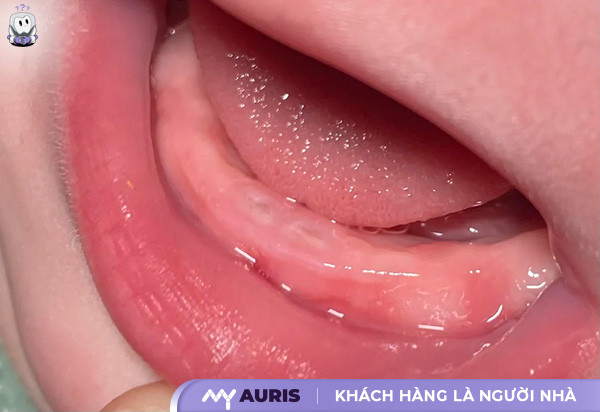
Is it dangerous if a baby’s gums swell when molars erupt?
Molar eruption is an entirely natural physiological process when a child is teething. During this stage, many babies experience swollen gums, especially in the area where the molar is erupting. If multiple teeth emerge at once, the gum swelling period may be longer and accompanied by other symptoms such as teething fever, runny nose, or teething diarrhea.
However, normal gum swelling during teething is not a cause for concern. If parents clean the baby’s gums properly and focus on appropriate dental care, the swelling will quickly improve without posing any danger to the child’s health.
What to do if a child experiences pain when molars erupt?
When a child experiences pain from molar eruption, many parents worry about what to do to alleviate their baby’s discomfort. Below are simple yet effective solutions that parents can apply at home.
Proper oral hygiene for children
During the teething stage, gums and tissues crack to allow teeth to emerge, increasing the risk of bacterial invasion and infection.
Mothers should use a gauze pad soaked in physiological saline to gently wipe the baby’s gums 2 – 3 times a day, combined with gentle gum massage to effectively reduce swelling and discomfort.

Choose appropriate food
- Prioritize soft, liquid, pureed foods to minimize impact on gums.
- Give the baby cool fruits and vegetables to gnaw on, such as boiled carrots or cucumbers, to relieve gum itchiness during teething.
- Supplement with yogurt, milk, and fruits to help reduce teething pain and boost nutrition.
Divide meals into smaller portions, do not force feed the child
Do not force feed the child when they don’t want to, as this can make them fear eating or refuse to breastfeed. Divide meals into smaller portions, feeding the baby slowly and gently, avoiding strong impact on the gums so the child doesn’t experience pain while eating. This helps ensure nutritional needs and creates a pleasant eating experience for the baby.
Take the child to the dentist if there are unusual signs
In cases where home remedies are ineffective and the child exhibits unusual signs, mothers should take the child to a dentist for examination. Symptoms to look out for include:
- Excessive drooling.
- Constantly rubbing cheeks or ears.
- Gums swollen, red, blistered.
- Baby is uncomfortable, fussy, refuses to breastfeed, eats poorly, has difficulty sleeping.
- Shows signs of fatigue, weakness, rapid weight loss.
When mothers observe that their baby’s gums are swollen or red, similar to the images shared by My Auris Dental Clinic, they should proactively provide special care to help the baby get through the teething stage gently.
Teething symptoms are normal physiological occurrences and usually resolve on their own after a few days. However, if the condition persists or the baby exhibits unusual signs as mentioned, mothers need to promptly take their child to a specialist doctor to ensure their safety.





